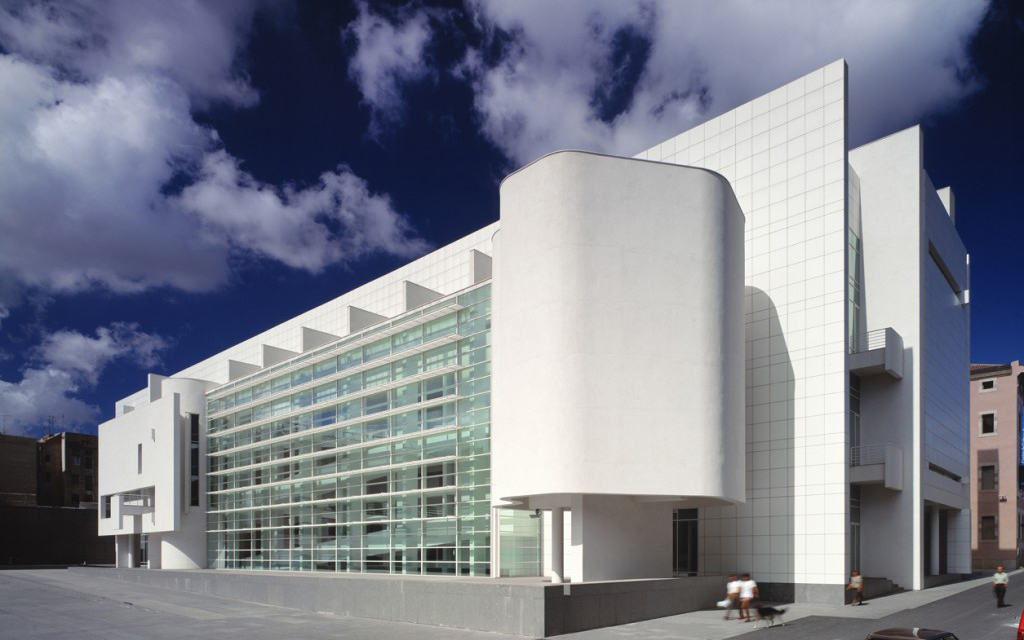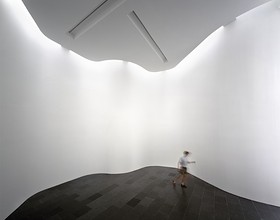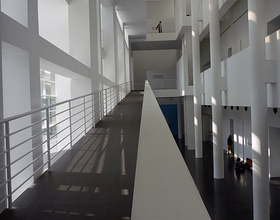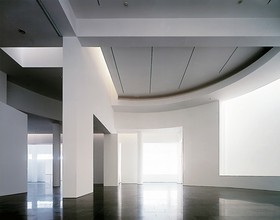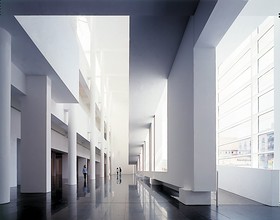MUSEUM OF CONTEMPORARY ART - MACBA
-
Contextually responsive in its scale and orientation, this museum plays a key role in restructuring the Gothic district of Barcelona. Together with the Casa de la Caritat cultural center and a new university building to the north of its sculpture court, the museum helps to consolidate this new arts quarter within the broader urban fabric. Entry to the gallery space is through a cylindrical, top-lit gallery/foyer leading to a glazed, triple-height ramp-hall that faces the new Plaça dels Àngels to the south. This hall, together with an intermediate corridor paved in glass block, enables the visitor to access six continuous loft-like spaces on successive levels. A semidetached wing at the eastern end of the block accommodates additional gallery space and the suite of curatorial offices. The main galleries are partially lit from above, particularly at the top of the building where the loft space is covered with louvered skylights. Some of the light from this source filters down via glass block floors and open slots to illuminate the lower levels. Where natural light enters from the south, it is screened in part by the external louvers, by a number of freestanding screen walls, and by the ramp. Clad in white enameled-steel panels, the plaza elevation is animated by the horizontal louvers of the ramp-hall and by two plaster sculptural elements, a cut out plane above the entrance and a free-form, top-lit special exhibitions gallery set in advance of the building at the eastern end of the main façade.
Photo credits: Scott Frances.
1870 Projects

